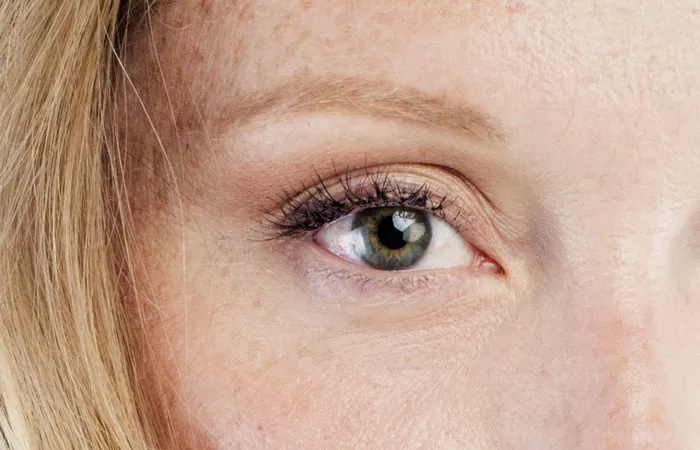Droopy eyelids, medically known as ptosis, can not only affect your appearance but also your vision and overall eye health. Ptosis occurs when the muscles responsible for lifting the upper eyelids weaken or the skin loses its elasticity over time. The condition can vary in severity, ranging from a subtle droop to a significant obstruction of vision. Fortunately, there are surgical procedures available to correct droopy eyelids and restore both functionality and aesthetics. In this article, we will explore the surgical options for droopy eyelids, including the most common procedures, their benefits, and what to expect during and after surgery.
Understanding Ptosis
Before delving into the surgical solutions for droopy eyelids, it’s crucial to understand the condition and its causes:
Age-Related Ptosis: One of the most common causes of ptosis is aging. Over time, the muscles that lift the upper eyelids and the skin surrounding the eyes can lose their elasticity and strength, leading to a drooping appearance.
Congenital Ptosis: Some individuals are born with ptosis, which may be due to underdeveloped or poorly functioning eyelid muscles.
Acquired Ptosis: This type of ptosis can result from various factors, including eye injuries, neurological conditions, eye surgeries, or the use of certain medications.
Functional and Cosmetic Concerns: Ptosis can cause functional issues by obstructing vision or leading to eye fatigue. It can also have cosmetic implications, affecting self-esteem and appearance.
Surgical Options for Droopy Eyelids
Several surgical procedures can address droopy eyelids. The choice of procedure depends on the severity of ptosis, the underlying cause, and individual patient factors. The most common surgical options for correcting droopy eyelids include:
Blepharoplasty (Eyelid Surgery)
Blepharoplasty is a surgical procedure that can address both functional and cosmetic concerns related to the eyelids. There are two types of blepharoplasty:
a. Upper Blepharoplasty: This procedure focuses on the upper eyelids. It involves making incisions in the natural creases of the eyelids to remove excess skin and fat. Upper blepharoplasty can be effective for mild to moderate ptosis and can improve both vision and appearance.
b. Lower Blepharoplasty: Lower blepharoplasty primarily targets the lower eyelids to reduce puffiness and remove excess skin. While it can improve the appearance of lower eyelid ptosis, it is not typically used for addressing drooping upper eyelids.
Ptosis Repair Surgery
Ptosis repair surgery is specifically designed to correct drooping upper eyelids. The procedure aims to strengthen or reposition the levator muscles responsible for lifting the eyelids. Depending on the severity of ptosis, different techniques may be used:
a. External Ptosis Repair: This approach involves making an incision in the eyelid crease to access and reposition the levator muscle. It is suitable for moderate to severe ptosis.
b. Internal Ptosis Repair: In this technique, the surgeon makes an incision on the inside of the upper eyelid, avoiding visible external scarring. Internal ptosis repair is typically reserved for mild to moderate ptosis.
What to Expect During and After Surgery
Understanding what to expect during and after droopy eyelid surgery is essential for making an informed decision and preparing for the procedure:
Consultation: Your journey begins with a consultation with an ophthalmologist or a board-certified plastic surgeon who specializes in eyelid surgery. During this appointment, your medical history, eye health, and specific concerns will be assessed. The surgeon will determine the most suitable surgical approach and explain the procedure in detail.
Preoperative Preparation: Before surgery, you may need to undergo preoperative evaluations, such as eye exams and imaging, to ensure that you are a suitable candidate for the chosen procedure. You will also receive preoperative instructions, which may include dietary restrictions, medication adjustments, and lifestyle recommendations.
Anesthesia: Depending on the procedure and your preferences, you will receive either local anesthesia with sedation or general anesthesia to ensure your comfort during surgery.
Surgery: The surgical approach varies depending on the chosen procedure, but it generally involves making precise incisions, repositioning or strengthening the muscles, and removing excess skin or fat. The surgeon will take great care to create symmetrical results and minimize scarring.
Recovery: After surgery, you will be closely monitored in a recovery area. It’s common to experience swelling, bruising, and mild discomfort in the days following the procedure. You may need to wear protective eyewear and use prescribed eye drops during the initial recovery period.
Postoperative Care: Your surgeon will provide detailed postoperative care instructions, which may include keeping the head elevated, avoiding strenuous activities, and protecting the eyes from sunlight and wind. Follow-up appointments will also be scheduled to monitor your progress.
Results: The final results of droopy eyelid surgery may take several weeks to become apparent as swelling subsides and the tissues settle. Most patients experience improved eyelid function, vision, and a more youthful appearance.
Conclusion
Droopy eyelids, or ptosis, can have functional and cosmetic implications, affecting both vision and self-confidence. Fortunately, there are effective surgical procedures available to correct this condition. Blepharoplasty, which can address both upper and lower eyelids, and ptosis repair surgery, specifically designed for upper eyelid ptosis, offer tailored solutions to meet individual needs.
If you are considering surgery for droopy eyelids, it is essential to consult with a qualified ophthalmologist or board-certified plastic surgeon who specializes in eyelid surgery. They will assess your unique situation, recommend the most appropriate procedure, and guide you through the entire process, from consultation to recovery. With the right surgical approach and professional care, you can achieve rejuvenated and functional eyelids, enhancing both your vision and appearance.


